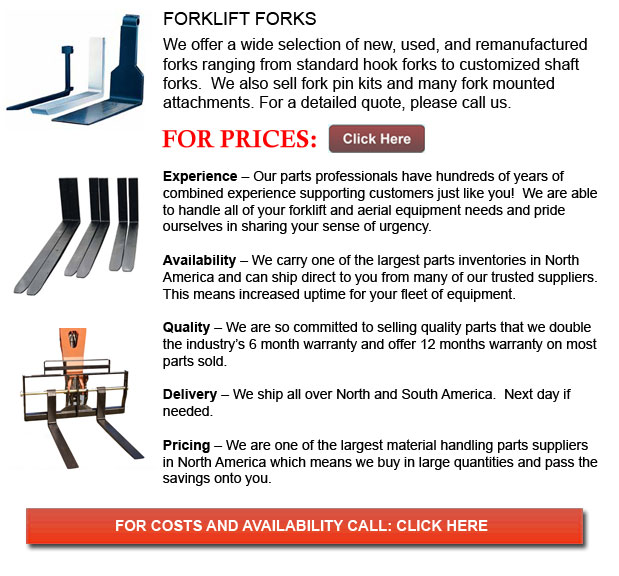
There are two basic styles of lift truck blades: the pin type and the hook type. Shaft mounted or likewise referred to as pin type, are normally found in larger forklifts. This particular style uses the fork pin or shaft so as to connect onto the lift truck. On the topmost part of the fork there is an eye which the pin can slide through. This will secure the blades to the carriage. Hook type blades are often used on trucks as much as fourteen thousand pounds capacity. Hook types are name for the reason that they hook over and secure into the bars on the tine carriage. These blades could be easily installed by way of sliding upper and lower hooks onto the end of the carriage bars. Another assembly alternative is making use of a special fork loading notch in the middle of the lower carriage mounting bar.
The industry has standardized tine sizings and they are also load rated according to the fork thickness and width. As soon as a tine requires to be replaced, it is essential to make certain the new fork has the same load rating as the one being replaced. This fork rating will be stamped on the shank of the blade.
Using forklifts can greatly lessen time and labour in numerous industrial applications. Having the suitable blades attached on the machine would improve efficiency and safety.
Determine the type of blades required to be able to complete the task in view of the fact that there are different kinds. Palletized materials could be safely moved using rather blunt-end style forks, whereas non-palletized material like cardboard boxes needs a sharp-ended fork capable of sliding underneath the box. Ask your trainer or manager to be able to determine the right forks meant for the workplace application.
Each forklift has its' very own design and correct method to change the blades therefore refer to the instruction booklet for your particular model. Determine whether or not your unit has quick-change forks. Many newer models have this particular fork style so as to make changing forks an easier job to accomplish in less time. Check the manufacturer's instructions to take out the forks accordingly. Most quick-change forks drop automatically. Ensure the side shifters are situated in the right place so the new attachment or blades fit rightly on the lift truck. Connect the lifting attachment or blades according to the forklift's directions. Consult the instruction booklet if considered necessary and as soon as they are secured, do a safety check previous to loading the new blades for the first time.
![]() Click to Download the pdf
Click to Download the pdf
Forklift Parts








Lift Parts Express Modesto
TOLL FREE: 1-888-695-7994
LOCAL: 209-343-9537
3430 Tully Road
Modesto, California
modestoforkliftparts.com
Email Us
About Us



